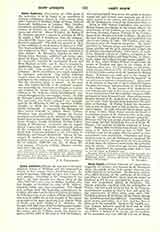

Saint Andrews, UNIVERSITY OF.—The germ of the university is to be found in an association of learned ecclesiastics, formed in 1410, among whom were: Laurence of Lindores, Abbot of Scone, Richard Cornwall, Archdeacon of Lothian, Wm. Stephen, afterwards Archbishop of Dunblane. They offered courses of lectures in divinity, logic, philosophy, canon and civil law. Henry Wardlaw, the Bishop of St. Andrews, granted a charter of privilege in 1411; he sought a Bull of foundation from the antipope, Benedict XIII, whose legate he was and whose claims Scotland supported. The Bull was granted in 1413; it was confirmed by royal charter of James I in 1532. The five-hundredth anniversary of the foundation was celebrated in 1911. The university consisted of three colleges: St. Salvator’s, founded in 1450 by Bishop James Kennedy, confirmed and further privileged by Popes Nicholas V, Pius II, and Paul II; St. Leonard’s, founded by Archbishop Stuart and Prior Hepburn in 1512; and St. Mary’s, founded by Archbishop James Beaton, under sanction of Paul III, in 1537. This occupied the site of the original pedagogy. All the foundations were amply supported by successive endowment. The college buildings escaped when the churches of St. Andrews were demolished by the reformers, but it was not until 1574 that the university began to recover. At the same time that Andrew Melville (a St. Andrews’ student) was reerecting the university at Glasgow, a commission, inspired by George Buchanan, began a series of reforms at St. Andrews, which intermittently continued throughout the seventeenth century. In 1747 St. Salvator’s and St. Leonard’s Colleges were united. The university was further enlarged and strengthened by the affiliation in 1897 of University College, Dundee, at which the scientific departments are chiefly conducted. A proposal by the Marquess of Bute (rector 1892-98) to affiliate Blair’s College, Aberdeen, was unsuccessful. Among the famous professors and students in St. Andrews of the earlier period must be named John Major, Andrew Melville, Gavin Douglas, George Buchanan, Patrick Forbes, Napier of Merchiston; its leaders and its alumni played a great part in Scottish ecclesiastical politics of the seventeenth century, most notably Zachary Boyd, Wm. Carstares, principal of the University of Edinburgh, and Samuel Rutherford. During the last century St. Andrews can show a long list of distinguished scientists and men of letters. The total number of students (1909-10) was 571, of whom 247 were women; University College, Dundee, contributed 214 of the total.
J. S. PHILLIMORE

